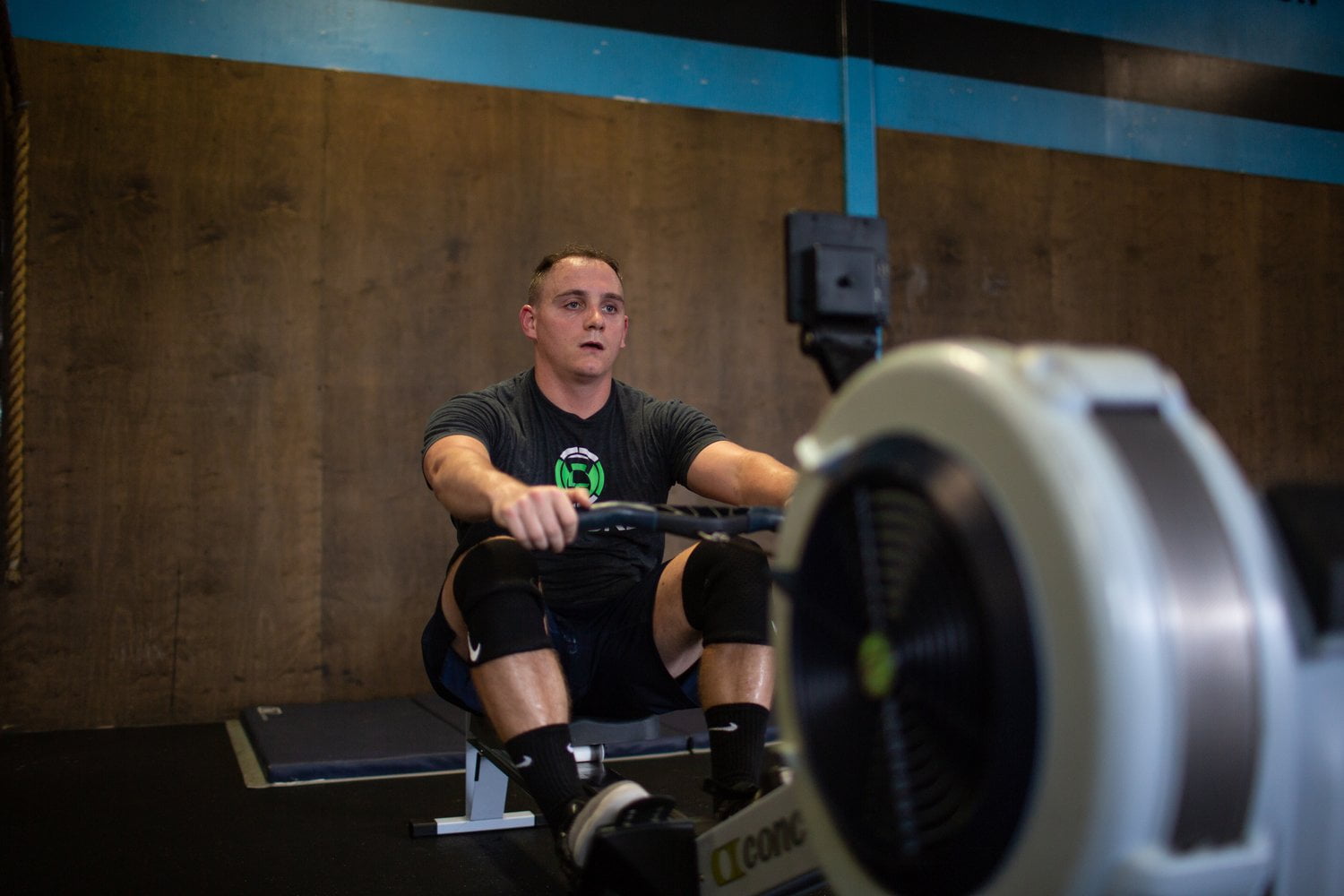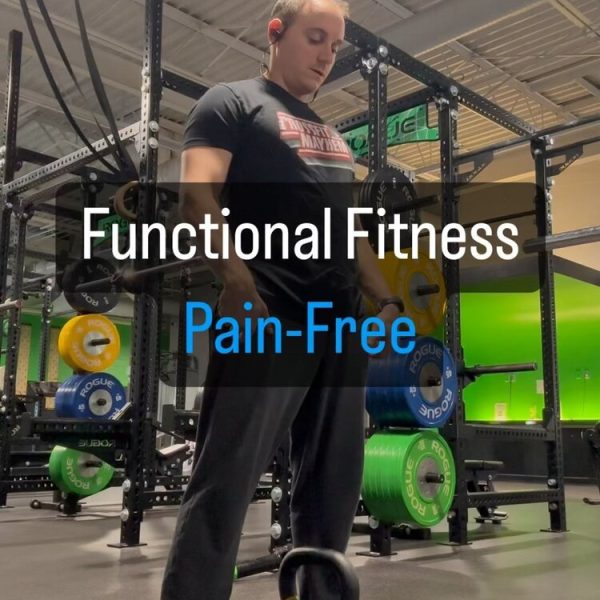Dr. Will Murtagh is a performance physical therapist and writer who helps Fitness Athletes elevate their fitness and train pain-free.
Fullscript -10% off 3000+ Supplements and free shipping on orders over $50 – Click HERE
As an affiliate partner of various brands and sponsored content, WillPower Strength & Nutrition may earn commission on qualifying purchases
In sport and exercise, the athlete that is able to delay fatigue and maintain a high level of performance through the duration of an activity or task is likely to be victorious in the field of play. Researchers and athletes have gone to great lengths over time to find new ways to prolong fatigue in an attempt to develop a competitive advantage over their competition and increase their likelihood of success both in training and in their respective sport. Drops in performance during activity can be attributed to several underlying mechanisms, depending on the dominant energy system for a given task.(1,2,3,4)
The two energy systems available to fuel activity include the aerobic and anaerobic energy systems.(5,6) The Anaerobic energy system is involved with the rapid production of adenosine triphosphate (ATP), the energy required for muscular work, in the absence of oxygen.(5,6) This system is further split into the phosphagen system and the glycolytic system.(5,6) The intensity, as well as the duration of the sprint will dictate which of these is primarily used.(5,6) The phosphagen system dominates during maximal sprints or bouts of activity lasting less than five seconds and is fueled via the breakdown of phosphocreatine, a substrate stored in the muscle tissue.(6) Sports that utilize this energy system include short distance sprints, such as a 50 meter sprint or high jumping.(6) The glycolytic system dominates between thirty seconds and three minutes and is fueled through the breakdown of glucose via glycolysis for ATP.(6) Glycolysis will also result in the generation of pyruvate or lactate, depending on the intensity and duration of the task with relatively higher intensity activities leading to lactate and relatively lower intensity activities leading to pyruvate.(5) Sports that rely heavily on the glycolytic energy system include sports like wrestling and 800 meter sprinting.(5) It is important to note however, that all energy systems are working at any given time but one will provide the bulk of ATP based on the task.(6) As athletes engage in high intensity sprinting that extends in duration into the glycolytic time domain, they begin to generate hydrogen ions as well as lactate at a faster pace than they can clear it.(5) This inflection point is termed the Lactate Threshold and indicates a primary reliance on Anaerobic metabolism, specifically via the glycolytic energy pathway.(5)
For high intensity activities, or activities that utilize the anaerobic energy system, the mechanisms of fatigue can include, fatigue of the central and peripheral nervous systems, decreased calcium release from the sarcoplasmic reticulum, Increased ratings of perceived exertion and an increase in hydrogen ion accumulation in the muscle tissue resulting in a decreased blood pH.(1,2,3,7,8,9) As hydrogen ions accumulate and blood pH begins to decline, an acidic environment is created which in turn inhibits glycolytic enzymes responsible for generating ATP through glycolysis and thus, the production of energy required for muscular contraction is slowed significantly.10 As ATP is synthetization drops, anaerobic performance drops with it.(10) Recent research has looked at Beta-Alanine supplementation as a tool to combat these mechanisms in an attempt to delay fatigue during anaerobic activities such as sprinting and improve performance of athletes.
The purpose of this systematic review will be to investigate what the evidence based literature has found regarding the supplementation of Beta-Alanine by athletes, in an attempt to improve various metrics of anaerobic sprint performance such as sprint speed, distance covered and repeatability. This review will also identify proper supplementation guidelines for athletes, identify the utility of Beta-Alanine supplementation based on the varied sprinting tests used in the evidence based literature, and finally, describe the implications that these findings have on athletes and their continued pursuit of enhanced performance.
Beta-Alanine is an amino acid involved with the synthesis of Carnosine, through its combinations with L-histidine.(11) Carnosine is a cytoplasmic dipeptide that is found in human skeletal muscle whose primary responsibility during high intensity exercise is maintaining muscle pH.(12) Carnosine is also responsible for acting as a Calcium regulator, increasing sensitivity to calcium to be more readily used during the muscle excitation contraction coupling process.(13) During this process, calcium binds to troponin, initiating muscular contraction.6 Carnosine acts as a pump during exercise to exchange calcium ions for hydrogen ions to maintain muscle pH.(13) Carnosine will become increasingly active in the muscle during high intensity activity as hydrogen ions accumulate and the pH drops from the resting level of 7.1 to a pH of 6.5.(14) When the pH in the muscle tissue reaches 6.5, it is said to have reached fatigue and performance is significantly reduced or is stopped completely.(14) The mechanisms of improved anaerobic sprint performance as a result of Beta Alanine supplementation include the modulation or prevention of the factors listed above, which contribute to fatigue during high intensity sprinting. Current evidence based literature has demonstrated repeated successful outcomes of Beta Alanine supplementation on these factors of fatigue.
Saunders et al, conducted a randomized double blind, placebo controlled, study that examined the effects of Beta Alanine supplementation on performance in the “YoYo Intermittent Recovery Test Level 2”. The YoYo Intermittent Recovery test is a field test to assess an athletes ability to recover from intense exercise and places a high emphasis on the anaerobic energy system due to the sprinting velocity that is required to perform the test.(9) To perform the test, the athlete performs repeated sprints of 40 meters divided into two lengths of 20 meters, at progressively faster speeds which are dictated by an audio recording. In between sprints, the athlete is allotted ten seconds of active recovery while they walk ten meters before beginning the subsequent sprint. The athlete is finished when they fail to cover the 40 meters in the allotted time on two consecutive attempts. The test is also sensitive to changes in individual football performance and is associated with total distance covered during a football match.(9) The study had seventeen amateur football players perform the YoYo test on two different occasions, separated by twelve weeks of supplementation with Beta Alanine. The subjects consumed 3.2g per day of Beta Alanine or a placebo over the twelve weeks. The results of the study indicated that there was a significant improvement in YoYo test performance in the Beta Alanine group compared to the placebo group. Performance changes post supplementation period for each group ranged -37.5 to + 14.7% and +0.0 to 72.7% for the placebo and Beta Alanine group respectively. These effects were attributed to increase muscle buffering capacity because although concentrations of phosphocreatine and glycogen decreased during the test, there was no difference in concentrations of these substrates between 85% and 100% full exhaustion. (9) Indicating that depletion of these substrates did not contribute to fatigue. (9) However, muscle pH was significantly lower at exhaustion compared to 85% of exhaustion indicating that muscle acidosis was the primary limiting factor in performance. (9) The authors also noted that Beta Alanine supplementation not only was useful in improving performance on the posttest through increased buffering capacity, but, it also improved the supplemental groups ability to train at higher intensities over the twelve weeks, thus having an additive effect than supplementation alone.(9)
Millioni et al, conducted a randomized, double blind, placebo controlled trial on eighteen physically active males who were instructed to ingest 6.4g per day of Beta Alanine over the course of 6 weeks. The study looked at Beta Alanine’s effect on the subjects sprint repeatability as a result of increased buffering capacity via increased carnosine levels, and attenuation of neuromuscular fatigue. The subjects were tested using six maximal effort sprints of 35 meters, with ten seconds in between sprints and a four minute rest between a second set of six sprints. In addition, they also had the subjects perform high intensity interval training of ten, one minute runs at 90% maximal aerobic velocity, as determined by an incremental running test, interspersed by a one minute passive recovery period. Neuromuscular function assessments were performed using the vertical jump and maximum voluntary isometric contractions (MVC) through femoral nerve electrical stimulations one minute after the final jump. Three countermovement jumps were performed, separated by one minute of rest and the highest jump was recorded. The MVC was performed after the repeated sprints. At posttest, the Beta Alanine group improved in total time, best time and mean time for the repeated sprints as well as made significant improvements in MVC and vertical jump values in the fatigued state, compared to resting measurements.(8) The supplemental group also showed an improvement in the HIIT training by +10.4 +/-2.2% although it was not considered significantly higher than the placebo group.(8) Additionally, the supplemental group showed a higher amount of lactate concentration posttest, which is not a cause of fatigue and indicative of increased glycolytic metabolism. (1)
Similar to Saunders et al, the authors stated that the improvements made by the subjects were attributed to increased muscle buffering capacity of hydrogen ions accumulated during high intensity sprinting.(8) However, the improvements in neuromuscular fatigue were due to the effects that increased Carnosine levels have on Calcium sensitivity.(8) Carnosine has been shown to have a positive effect on the facilitation of the muscle excitation contraction process in muscle fibers resulting in a decreased cumulative fatigue with each subsequent contraction.(8)
Another mechanism in which Beta Alanine supplementation can improve anaerobic sprint performance is through a decreased rating of perceived effort or RPE by the athlete.(7) Rating of perceived effort is the subjective feeling of difficulty or discomfort that an athlete associates with the task they are performing.(7) Generally, as intensity and effort increases, rating of perceived effort will climb as well. (7) Glenn et al, conducted a double blind, randomized study looking at the effect an acute dose of 1.6g of Beta Alanine, combined with 34g of dextrose, had on RPE, and absolute and relative peak and mean power output for twelve competitively trained female cyclists on a Wingate bike test. The Wingate bike test is a valid test for anaerobic power and consists of 30 second sprints against a standardized resistance level equal to 7.5% body mass.(7) The protocol for the test includes a four minute warm up for the test at a self-selected pace, followed by an increase in pedal cadence until 110 rpm’s are reached.(7) At which point, the resistance is applied and the subjects continue sprinting for the thirty second interval. The subjects ingested the Beta Alanine and then performed the three sprints with two minute recovery intervals in between efforts. At the conclusion of each test, power, blood lactate, heart rate and RPE were recorded. The authors reported no improvements in fatigue over the course of the sprints or power output. However, they did find that an acute dose of Beta Alanine and subsequent increases in carnosine levels, improved the subjects RPE scores. (7) This study was the only one reviewed that used an acute dose of Beta-Alanine. Although acute dosing did not improve Wingate performance, the authors noted that improvements in RPE can result in improved sprint performance since exercise will usually terminate when feelings of discomfort outweigh the potential rewards of continuing.(7) According to the authors, in a setting where athletes could reduce resistance and/or work in a longer time domain, improvements in sprint performance may have been seen. It was also speculated that decreased RPE’s over the course of a training period, could allow athletes to train at higher intensities more frequently, causing an additive effect such as in the study by Saunders et al, thus improving performance over time. (7)
In order to reap the potential benefits of Beta Alanine supplementation, a proper dosing strategy should be established so that athletes can effectively use the supplement. Unfortunately, The current evidence based literature lacks consistency when it comes to the amount of Beta-Alanine used per study. Some studies use doses as low as an acute dose of 1.6 grams such as in the study done by Glenn et al, while others use doses in upwards of 6.4 grams per day such as the studies done by Bellinger et al and Claus et al.(2,3,7) Additionally, not all of the literature simply had subjects consume fixed amounts of Beta Alanine over time. (10,11) Some dosing strategies included a loading period, where a supraphysiological dose was consumed over a period of time in order to super compensate Carnosine levels in the muscle before dropping to a maintenance dose to maintain those levels for the duration of the study or until the posttest. (12,15) These included studies done by de Andrade Kratz et al and Saunders et al. Other researchers chose to increase the amount of Beta Alanine that was ingested in a step wise fashion over time.(11) For example, in the study done by Van Thienen et al, subjects consumed 2g per day for the first two weeks and then every subsequent two week interval, another one gram was added until 4g per day was reached for the final three weeks of the study. The only study that used a dosing amount based off of subjects body mass was done by Ducker et al, looking at the effects of Beta Alanine on 800 meter run performance. (16) The researchers had subjects consume 80mg of Beta Alanine per kilogram of body weight. The final dosing strategy used was an alternating regiment of high intake days and low intake days where subjects consumed either 4.8g per day or 2.4g per day on alternating days by Beasley et al. The one similarity between all of the literature is that all subjects consumed their Beta-Alanine supplements with food. Also, outside of one study done by Glenn et al, where an acute dose was used, the total amount consumed for the day was broken up into equal doses throughout the day to minimize paresthesia’s or a tingling sensation on the skin.(17) This was done by researchers to effectively mask participants to the groups that they were assigned to since the development of paresthesia’s would signify which group a subject was assigned to and potentially cause bias in the study.(7)
Although there are various ways of supplementing Beta-Alanine in the evidence based literature, there are themes that emerge in the studies that have shown ergogenic benefits. Not all of the literature on Beta-Alanine report a direct measure of Carnosine in the muscle tissues of subjects.(8,17) However, it can be implied that Carnosine levels do rise when supplementation begins because the rate limiting step of Carnosine synthesis is Beta Alanine availability.(12) Brisola et al, reported that a daily dose of Beta-Alanine between 3.2g per day and 6.4 grams per day were able to increase Carnosine levels by 42.1% and 64.2% respectively.(13) Thus, supplementing in this range can help optimize a potential ergogenic effect.(13) Also, the research does support that a loading period pf 6.4g per day should be employed when supplementing Beta Alanine for at least four weeks before dropping to a maintenance dose of 1.2-3.2g per day. (11) This is based on the work of Stegan et al, who found that a dose of 1.2g per day was able to maintain elevated Carnosine levels at 30-50% above baseline. (11)
There are situations where less Beta-Alanine is needed to achieve an expected ergogenic effect. (7) For instance, Glenn et all, reported that females require less Beta-Alanine than males do. Thus, they require less to achieve an ergogenic benefit. (7) The mechanism behind this phenomenon was reported by Stegan et al, who found that since women tend to have less fat free mass than males, they in turn have lower resting Carnosine levels at rest.(11) So, smaller daily doses are needed to increase Carnosine levels beyond what is measured at rest and reap ergogenic benefits.(7) Similarly, it was reported by Glenn et al, that for athletes that are currently training, less Beta-Alanine is needed to increase Carnosine levels to an ergogenic level.(14) This is based on a study done by Bex et al, where the effect of training status on Carnosine concentration in arm and leg muscles was investigated. It was found that subjects who were considered trained, had a more pronounced Carnosine increase than subjects that were considered not trained.(14) The underlying mechanism for these findings were speculated to be related to increased blood flow to trained athletes and thus better Beta Alanine delivery, contraction induced increases in transporters TauT and PAT1 which take up Beta Alanine in the muscle cell, increased capillary density – which also would increase Beta Alanine delivery to the muscle and an increase in enzymes within the muscle cell responsible for Carnosine synthesis.(14) However, it is important to note that these mechanisms were speculative and require further research to be elucidated.
The majority of the evidence based literature does in fact support the supplementation of Beta-Alanine for the improvement of anaerobic sprint performance in athletes. In most studies, subjects showed an improvement in either sprint speed, distance covered and/or repeatability. (1,3,11,17)
For example, Bellinger et al, looked at the effects of Beta Alanine supplementation only and in combination with sprint interval training on training intensity, energy provision, and performance during exhaustive supramaximal cycling (120% of VO2 max) and a 4x 1km time trial, as well as 4km and 10km time trials on fourteen trained cyclists. After a 28 day supplementation period with 6.4g per day, subjects retested the exhaustive cycling, 1km intervals and the 4km and 10 km tests. At posttest, the supplementation group had improvements in the last two 1km intervals and improved time to exhaustion on the supramaximal cycling test, demonstrating an improvement in sprint repeatability and distance covered respectively. (1) The 4km and 10 km time trials also improved, however, they were not statistically significant.(1)
Similarly, de Andrade et al, looked at the effects of Beta-Alanine on 23 highly trained Judo athletes. The subjects consumed 6.4g per day of Beta-Alanine or a placebo for four weeks and were assessed using the Special Judo Fitness test, 10 minutes after a five minute simulated fight. The Special Judo Fitness test includes an active participant and two non-active participants standing three meters apart.(12) The active participant will perform 3 sets of sprints with 3 minutes between each set.(12) Each set will have three subsets lasting 15 seconds, 30 seconds and 30 seconds respectively, with 10 seconds between each subset.(12) While the clock is running, the active participant will try and perform as many “Judo throws” on the two participants, standing 3 meters apart, sprinting between the two, as many times as possible within the work interval.(12) After the supplementation period, athletes retested the Special Judo test and 11 out of 12 athletes increased the number of throws that were completed in the test. These results can be speculated to show that athletes demonstrated an improvement in speed, distance covered and repeatability in order to improve the number of times they were able to alternate between the participants 3 meters away and “throw” them.
There was also an improvement in sprint performance with 6.4g per day of Beta-Alanine for 4 weeks in a different study done by Bellinger et al, looking at its effects on a wide range of cycling performance tests of different length on fourteen trained cyclists. Subjects completed tests including 1km, 4km and 10km time trials as well as a supramaximal cycling bout pre and post supplementation. At posttest, there was no difference between groups during the 1km and 10km time trials.(2) The 4km time trial however, showed a 6.5 second improvement for the supplemental group while the control group got slower.(2) But, the improvement was not considered statistically significant. In the supramaximal cycling test, total time to exhaustion was significantly improved in the supplemental group compared to the control group.(2) Further demonstrating the efficacy of Beta Alanine in improving speed and distance covered.
Out of all the evidence based literature looking at the utility of Beta-Alanine to improve sprint performance in athletes, the ones that showed performance improvements displayed similar themes in the testing of subjects. These themes can help identify which type of athletes would benefit most from its use. Beta-Alanine’s main purpose as a sports supplement is to drive increases in Carnosine levels and ultimately buffer hydrogen ions, to maintain the pH of the muscle.(18) Thus, it makes sense that Beta Alanine’s efficacy is based on whether or not hydrogen ions are accumulating during the sprint, causing an acidic environment in the muscles being used. Similarly, in the studies that found positive effects as a result of supplementation, blood lactate also rose during the exercise bouts as muscle pH fell.(11,16) The specific parameters that needed to be adhered to for improvements to be seen included, work intervals of 60 seconds to 240 seconds, work to rest intervals that had less than a 1:1 ratio, intensity levels that were above an athletes lactate threshold and/or stressed the athletes glycolytic system.(8,12,16) These conditions forced hydrogen ions to accumulate, dropping pH below 7.1 and drove blood lactate 7-12 mmol allowing Carnosine to play a role in augmenting performance.(11,16)
The literature on Beta-Alanine use for sprint performance that did not adhere to these guidelines showed that supplementation was largely ineffective.(7,9,10,13) For example, Beasley et al, looked at the effect of two different loading strategies of either 2.4g per day and 4.8g per day on lactate, RPE, distance rowed, mean power and peak power during a 30 minute rowing time trial and three :30 maximal sprints separated by :60 of rest. Brisola et al, looked the effects of Beta Alanine on specific water polo tests that included six sprints of 10 meters with a 17 second recovery period followed by a 30 minute distance swim followed by another set of six sprints. In between pre and post testing, subjects consumed 4.8g per day for the first 10 days and 6.4g per day in the final 18 days. Lastly, Saunders et al, looked at Beta-Alanine supplementation on repeated sprints during intermittent exercise performed in hypoxia. Subjects consumed 6.4g per day of Beta-Alanine for the first 4 weeks and then 3.2g per day for the final week. Subjects performed five, six second sprints with a 24 second active recovery interval while attached to a harness to detect mean and peak power output. The three studies mentioned did not test the subjects in the conditions mentioned that would allow hydrogen ions and lactate to rise, while simultaneously dropping muscle pH. Thus, at the conclusion of the studies no beneficial results were found.
Across all the literature that was considered for this review, there was a large overlap in the dosing strategies used for studies that did and did not find positive ergogenic effects. For example, Clause et al, and Smith et al, both used dosing strategies of 6.4g per day.(3,18) However, only Clause et al found ergogenic effects after supplementation.(3) There was also a great deal of variation in dosing strategies between studies that did find ergogenic effects. For example, Ducker et al, and Kern et al, both found performance improvements in subjects after supplementing with Beta Alanine.(16,19) However, Ducker et al, had subjects supplement with 80mg/kg of body weight while Kern et al, had subjects consume 4g per day, regardless of body weight.(16,19) It is because of this variation and overlap that leads this author to look to the testing protocols such as work interval duration, work to rest ratios and sprint intensity as the primary factors on whether or not Beta-Alanine is useful for improving anaerobic sprint performance in athletes. This is barring that at the least, the minimal effective dose is consumed and that there is sufficient time for Carnosine levels to rise such as over a loading period.
Review of the current evidence on Beta-Alanine supplementation supports its use as a performance enhancer for anaerobic sprint performance.(1,3,8,9,11,12,16,19) However, It is also apparent that the effectiveness of the Beta-Alanine as a performance enhancer is primarily dependent on the accumulation of hydrogen ions that accumulate during the sprint. As well as secondarily dependent on the magnitude of central fatigue, decreasing calcium sensitivity and improvements in perceived effort.(7,8,19) Suggesting that sports relying heavily on the glycolytic energy system, where hydrogen ions accumulate, would benefit the most from its use.(1,3,12) As general guidelines, athletes that are involved in sports where there is high intensity sprinting or periods of intense physical activity, durations between 60 and 240 seconds or work to rest ratios less than 1:1 are the most likely to find performance improvements from Beta-Alanine supplementation.(12,16,19) Although there is overlap in dosing between studies that have and have not found positive effects, as well as variation in dosing between studies that have found positive effects, athletes looking to improve performance via Beta-Alanine supplementation should aim to consume 6.4g per day over the course of at least 28 days to increase Carnosine levels before dropping to 3.2g per day to maintain the elevated levels of Carnosine above baseline.(1,11,16) At this intake, there is likely to be enough Beta-Alanine consumed to increase Carnosine levels to supraphysiologic levels during the loading period and enough to maintain levels above baseline during maintenance.(11) No studies reviewed discussed the length at which a maintenance dose should last and is a potential area for future research.
This review has described the mechanisms behind the anaerobic sprint performance improvements that can be expected with Beta-Alanine supplementation. It has identified the conditions in both clinical testing and sports where supplementation will be the most efficacious, as well as outlined supplementation protocols for athletes looking to reap the ergogenic benefits of Beta-Alanine supplementation. However, a potential obstacle in supplementation is remembering to consume the supplement consistently. Every study that was considered in this review, with the exception of the one by Glenn et al, broke up the daily dose into various micro doses to minimize paresthesia and prevent bias. This may make it challenging for athletes to consistently meet the required doses each day. Thus, future research should be conducted to see if taking Beta-Alanine less frequently, such as once per day, is more or equally as effective for its uptake and increasing Carnosine levels. Practically, athletes may be more likely to be more compliant with a supplementation protocol when they have to remember to consume it less often, especially, for athletes with demanding time schedules.
P.S. If you’re interested in leveling up your fitness and staying pain-free while you train, I can help. Just click 👉🏻 HERE and message me “Performance” to learn more.
References:
1) Bellinger PM, Minahan CL. Additive Benefits of β-Alanine Supplementation and Sprint-Interval Training. Med Sci Sports Exerc. 2016;48(12):2417-2425. doi:10.1249/MSS.0000000000001050
2) Bellinger PM, Minahan CL. The effect of β-alanine supplementation on cycling time trials of different length. Eur J Sport Sci. 2016;16(7):829-836. doi:10.1080/17461391.2015.1120782
3) Claus GM, Redkva PE, Brisola GMP, et al. Beta-Alanine Supplementation Improves Throwing Velocities in Repeated Sprint Ability and 200-m Swimming Performance in Young Water Polo Players. Pediatr Exerc Sci. 2017;29(2):203-212. doi:10.1123/pes.2016-0176
4) Saunders B, Sunderland C, Harris RC, Sale C. β-alanine supplementation improves YoYo intermittent recovery test performance. J Int Soc Sports Nutr. 2012;9(1):39. Published 2012 Aug 28. doi:10.1186/1550-2783-9-39
5) Baechle, TR. Essentials of Strength Training and Conditioning. 3rd Edition. Human Kinetics. 2008.
6) Powers, SK. Exercise Physiology: Theory and Application to Fitness and Performance. 8th Edition. Mcgraw-Hill Education. 2011.
7) Glenn JM, Smith K, Moyen NE, Binns A, Gray M. Effects of Acute Beta-Alanine Supplementation on Anaerobic Performance in Trained Female Cyclists. J Nutr Sci Vitaminol (Tokyo). 2015;61(2):161-166. doi:10.3177/jnsv.61.161
8) Milioni F, de Poli RAB, Saunders B, et al. Effect of β-alanine supplementation during high-intensity interval training on repeated sprint ability performance and neuromuscular fatigue. J Appl Physiol (1985). 2019;127(6):1599-1610. doi:10.1152/japplphysiol.00321.2019
9) Saunders B, Sunderland C, Harris RC, Sale C. β-alanine supplementation improves YoYo intermittent recovery test performance. J Int Soc Sports Nutr. 2012;9(1):39. Published 2012 Aug 28. doi:10.1186/1550-2783-9-39
10) Beasley L, Smith L, Antonio J, Gordon D, Johnstone J, Roberts J. The effect of two β-alanine dosing strategies on 30-minute rowing performance: a randomized, controlled trial. J Int Soc Sports Nutr. 2018;15(1):59. Published 2018 Dec 18. doi:10.1186/s12970-018-0266-3
11) Stegen S, Bex T, Vervaet C, Vanhee L, Achten E, Derave W. β-Alanine dose for maintaining moderately elevated muscle carnosine levels. Med Sci Sports Exerc. 2014;46(7):1426-1432. doi:10.1249/MSS.0000000000000248
12) de Andrade Kratz C, de Salles Painelli V, de Andrade Nemezio KM, et al. Beta-alanine supplementation enhances judo-related performance in highly-trained athletes. J Sci Med Sport. 2017;20(4):403-408. doi:10.1016/j.jsams.2016.08.014
13) Brisola GM, Artioli GG, Papoti M, Zagatto AM. Effects of Four Weeks of β-Alanine Supplementation on Repeated Sprint Ability in Water Polo Players. PLoS One. 2016;11(12):e0167968. Published 2016 Dec 8. doi:10.1371/journal.pone.0167968
14) Bex T, Chung W, Baguet A, et al. Muscle carnosine loading by beta-alanine supplementation is more pronounced in trained vs. untrained muscles. J Appl Physiol (1985). 2014;116(2):204-209. doi:10.1152/japplphysiol.01033.2013
15) Saunders B, Sale C, Harris RC, Sunderland C. Effect of sodium bicarbonate and Beta-alanine on repeated sprints during intermittent exercise performed in hypoxia. Int J Sport Nutr Exerc Metab. 2014;24(2):196-205. doi:10.1123/ijsnem.2013-0102
16) Ducker KJ, Dawson B, Wallman KE. Effect of beta-alanine supplementation on 800-m running performance. Int J Sport Nutr Exerc Metab. 2013;23(6):554-561. doi:10.1123/ijsnem.23.6.554
17) Milioni F, Redkva PE, Barbieri FA, Zagatto AM. Six weeks of β-alanine supplementation did not enhance repeated-sprint ability or technical performances in young elite basketball players. Nutr Health. 2017;23(2):111-118. doi:10.1177/0260106017700436
18) Smith CR, Harty PS, Stecker RA, Kerksick CM. A Pilot Study to Examine the Impact of Beta-Alanine Supplementation on Anaerobic Exercise Performance in Collegiate Rugby Athletes. Sports (Basel). 2019;7(11):231. Published 2019 Nov 7. doi:10.3390/sports7110231
19) Kern BD, Robinson TL. Effects of β-alanine supplementation on performance and body composition in collegiate wrestlers and football players. J Strength Cond Res. 2011;25(7):1804-1815. doi:10.1519/JSC.0b013e3181e741cf













